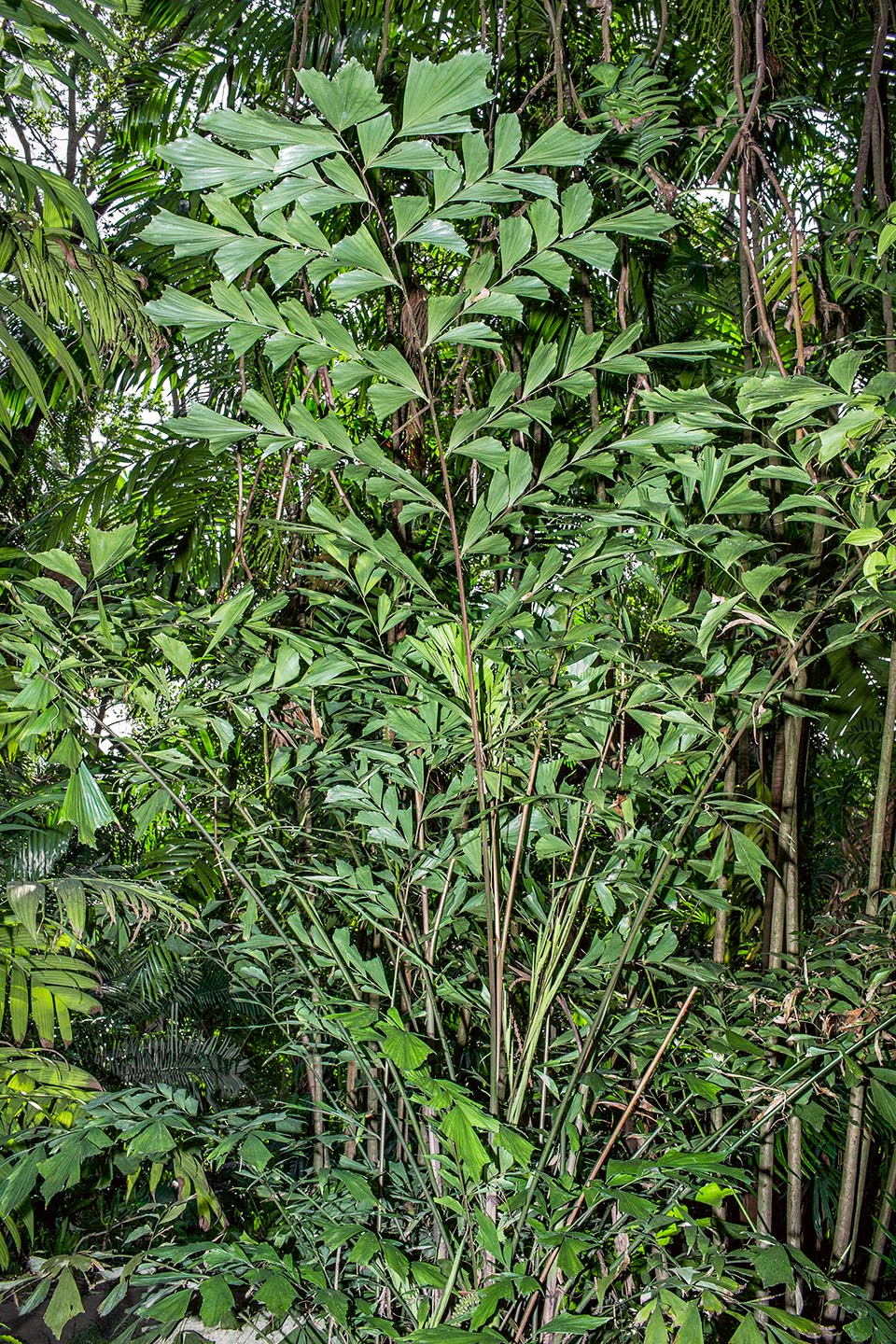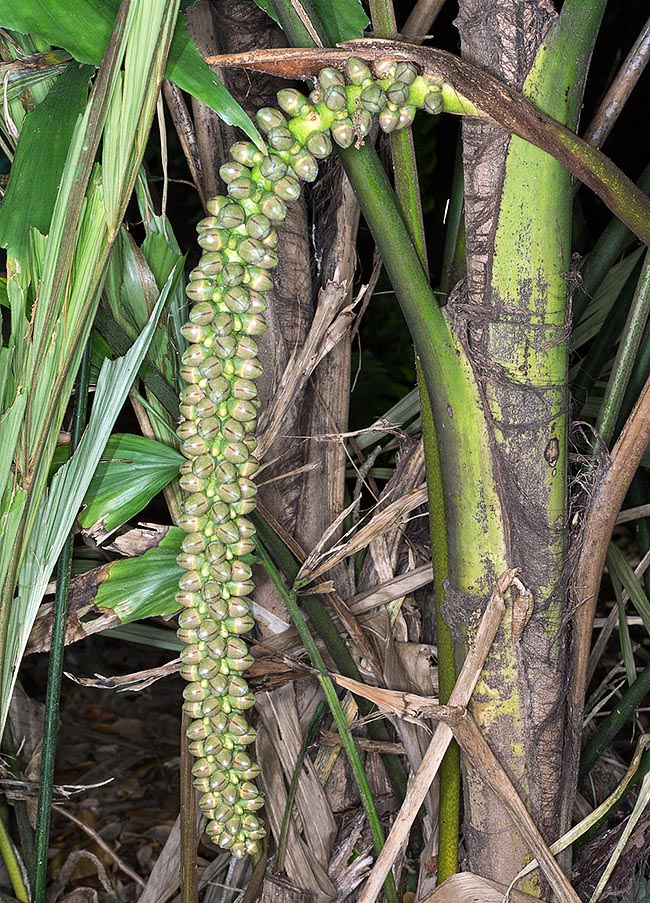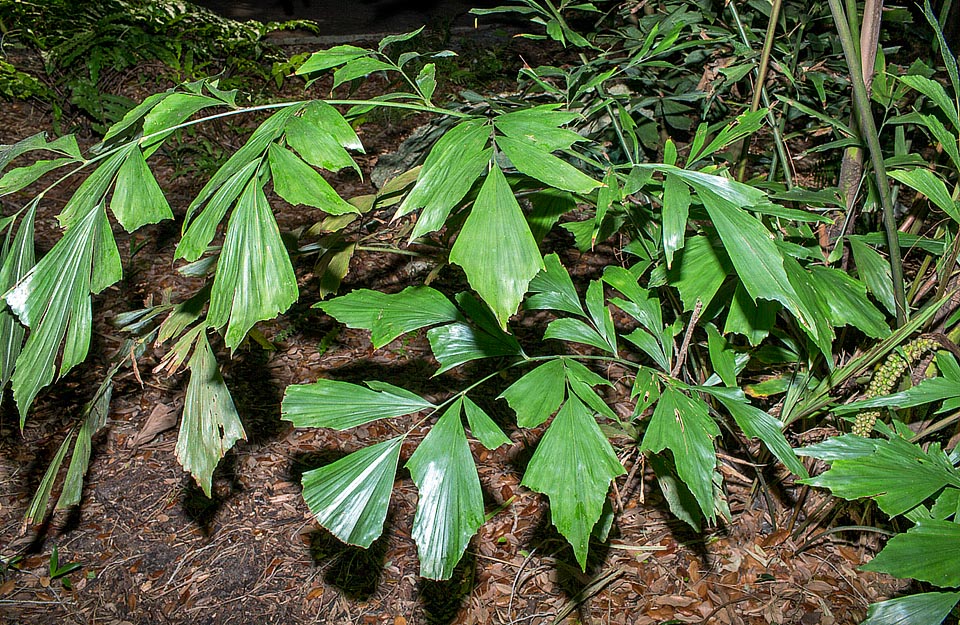Family : Arecaceae

Text © Pietro Puccio

English translation by Mario Beltramini

In the humid forests of China and Vietnam, the Caryota monostachya can reach even 3 m of height, with thin 2,5-4 cm stems © Giuseppe Mazza
The species is native to China (Guangxi, Guizhou and Yunnan) and Vietnam, where it grows in the underwood of the humid forests, mainly on calcareous soils, up to about 1400 m of altitude.
The name of the genus is the Latin substantive of Greek derivation “caryota, ae” = date, fruit of the palm; the specific name is the combination of the Greek adjective “μόνος” = alone and of the substantive = spike, with reference to the spike-shaped inflorescences.

Globose fruits of about 3 cm, brown-purple when ripe, containing usually two seeds. They are to be handled carefully due to the presence in the pulp of irritant needle-like crystals of calcium oxalate © Giuseppe Mazza
Common names: dwarf fishtail palm (English); dan sui yu wei kui (China); đùng đình bông đơn; móc bông đơn (Vietnam).
The Caryota monostachya Becc. (1910) is a monoecious species, monocarpic (fructifies only once then dies), caespitose, with thin stems, 1-3 m tall, and of 2,5-4 cm of diameter, provided of leaves for almost all of their length. The leaves, on a 0,8-1,5 long petiole, are bipinnate (pinnate in the juvenile phase), 1-2,8 m long, with 4-9 primary pinnae on the sides of the rachis and 5-7 coriaceous cuneiform leaflets, 12-20 cm long and 4-8 cm broad, with toothed-crenate apex truncated obliquely.
Inflorescences between the leaves usually formed by one single drooping spike, rarely with 2-3 ramifications, on initially ascending peduncle, 30-90 cm long, bearing flowers arranged in triads (one female flower between two male ones) of purple brown colour, oblong-ovate male flowers about 1,6 cm long with several yellow stamina; the male flowers do ripe before the female ones (proterandry) favouring the crossed fecundation.
The blooming proceeds from the top to the bottom (basipetal), completed the ripening the fruits of the lowest inflorescence of the stem dies, but the plants goes on living with the young stems produced at the base. Globose fruits of brown purple colour when ripe, of about 3 cm of diameter, with irritating pulp due to the presence of needle-like crystals of calcium oxalate, to handle therefore with care; usually containing two almost hemispherical seeds 1,8 cm long and 1,7-2,3 cm broad.
It reproduces by seed in draining organic loam maintained constantly humid at the temperature of 26-28 °C, with germination times from one to three months. Rare in cultivation, but with a major potential as ornamental species for gardens of limited dimensions.
Requires a shady position and slightl acidic to slightly alkaline draining soils and maintained humid; from experiences of cultivation outside the tropical and subtropical climate zones, it appears that it can resist to temperatures of some degree under the 0 °C, with possible damage of the aerial part and recovery in the following summer. Finally, it is an excellent subject to cultivate in pot for the decoration of indoor spaces.

Rare cultivated, being used to the poor light of the underwood, this small palm might be easily suitable, with its elegant leaves, for decoration of inner spaces © G. Mazza
→ For general notions about ARECACEAE please click here.
